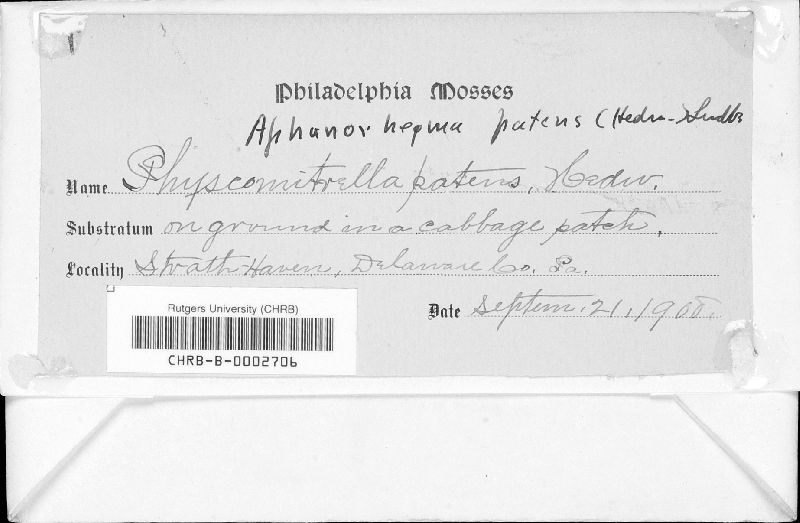Physcomitrella
|
Family: Funariaceae |
Plants small, scattered to gregarious. Stems 3-3.5 mm, erect, simple or forked. Leaves somewhat crisped when dry, erect-spreading when moist, lanceolate, ovate-lanceolate, or obovate, plane to weakly concave, 2-2.5 mm; margins entire to serrulate distally; apices acuminate; costa single, extending 1/2-2/3 of the leaf length, occasionally slightly forked at apex, or percurrent; proximal laminal cells rectangular, distal cells short-rectangular to rhombic with narrow ends. Sexual condition paroicous. Seta erect, to 0.2 mm. Capsule cleistocarpous, erect, immersed, symmetric, globose and apiculate, to 0.8 mm, wrinkled upon aging; exothecial cells irregular in shape, usually thin-walled; stomata with single guard cell, restricted to base of capsule, superficial; annulus none; operculum not differentiated, dehiscence irregular; peristome absent. Calyptra conic-mitrate, not or slightly lobed, small, covering apiculus of capsule only, smooth. Spores spherical to slightly elliptical, densely papillose to slightly spinulose. Physcomitrella is distinguished from other Funariaceae by the immersed capsule with irregular dehiscence, and the thin-walled, translucent exothecial cells. The generic name implies a resemblance to Physcomitrium, which is named, however, for its large calyptra, unlike that of Physcomitrella.
|

